StoryWeaver Spotlight: Rishi Mathur
Posted by Remya Padmadas on January 27, 2017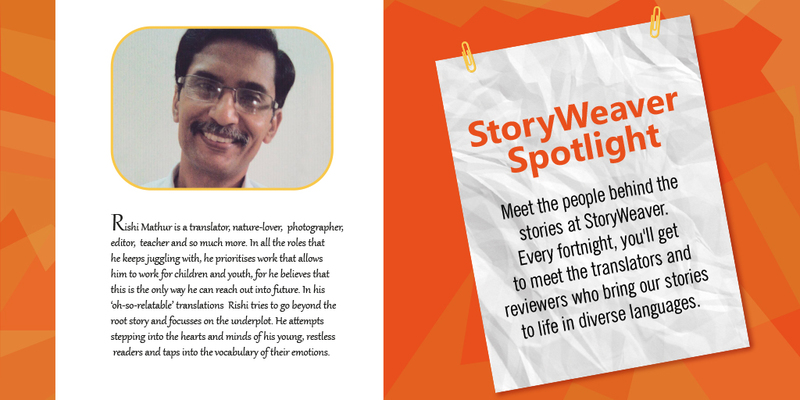
Q: What do you usually read? Which language do you prefer to read in?
I can read anything that I come across, but content on ‘how things evolve or change’ draws me most, whether it’s covered in philosophy, psychology, spirituality, life sciences, cosmology or for that matter, fiction, which I’m a bit sceptic about, in English.
Q: Is there a favourite book / author and why is it a favourite?
There are many, but a few of them always figure in my all-time favourite list:
'The Prophet' by Khalil Gibran for its profound thought on the basics of life, and simplicity of expression. 'Origin of Species' by Charles Darwin for the way he connected his observations with the realities of the natural world bit by bit to create this ‘enormous whole’ of knowledge. 'A Brief History of Time' by Stephen Hawkings for the way complex phenomena are explained with such clarity therein. 'Conversations with God' sequence of books by Neale Donald Walsch for the style and utility as manuals of spiritual understanding. 'Manwatching' by Desmond Morris, whom I’ve always deemed as my master in absentia, for the rich scientific study in non-verbal communication it is. And all the books by Osho, the great master, whom I could never meet. Though I learned a lot from his mate Dowser S Bhan of Nepal.
Q: You have contributed for us immensely. How has the StoryWeaver journey been?
A: Fantastic! Working for the young readers is always a joy! Wish, it continues as long as I can think and see.
Q: How does it feel when your story gets published online?
A: Nice. But, anticipating another one in my inbox for translation feels a lot better!
Q: You have translated / reviewed a handful of stories for us. Which one has been your favourite and why?
A: Ladle ka Dhol, the very first I translated still tops the list of my favourites. Also developed a special relationship with the Brahmaputra, as I travelled into Tibet through its text!
Q: What is your key driver in taking up these translations?
A: Frankly speaking, being a communicator, I do feel ‘something for all languages,’ but I’m more bent towards the non-verbal aspects, so the key driving force behind translating books or writing something is usually for having the remittances credited into my bank account.
Q: How else do you think we can join hands in taking bigger steps for children’s literature?
A: We can. Through greater and more informal outreach programme. I am really grateful to Pratham Books for giving me an opportunity to interact with young readers in the Pink City during Jaipur Literature Festival. Sharing in person, live interactions by people from the publishing trade can take literature and readership farther than anything else.
Q: How has the overall experience with SW been?
प्रथम बुक्स और स्टोरी वीवर की श्रेष्ठ बाल कथाएं मूलतः चाहे किसी भाषा में लिखी गयी हों, नन्हें पाठकों की दिलचस्पी बनाए रखने के लिए अनुवादक को भाषा की सीमा से पार जाकर, बालमन की कोमल भावनाओं और कथावस्तु से मेल खाती शब्दावली का ध्यान रखना ज़रूरी होता है। ताकि कहानी परायी सी न लगे। यह चुनौती बार-बार सामने आयी। और कामयाबी के साथ इसका सामना किया जिससे ख़ूब ख़ुशी मिली। रचनात्मकता के ऐसे अवसर एक अनुवादक को लेखक के बिकलकुल क़रीब पहुंचने का एहसास कराता है। दूसरों की कलम की जायी कहानी अपनी सी लगने लगती है। ऐसी दत्तक रचनाओं को पोसने का मौक़ा देने के लिए प्रथम बुक्स और स्टोरी वीवर के संपादक मंडल का आभार। इस सुखद स्वाद में जोश का तड़का लगाने का काम किया प्रथम की युवा संपादक आमना सिंह ने। झटपट काम पूरा करने का दबाव बनाने के लिए छुट्टी के दिन भी ख़ुद लगातार संपर्क बनाए रखकर ऐसी चुनौतीपूर्ण समय सीमा में काम करवाया कि हैरान हूं, पर ख़ुश हूं।
The overall experience was good. It was especially nice, because of the great motivation offered by the Pratham Books' team who sounded hard-pressed for deadlines even on Sundays, making me work odd hours at breakneck speeds, making me feel more alive and kicking than I actually am?
Q: You wear many hats - which one is your favourite?
A: I’ve always been a nature lover, and will always be one! But being in the field of communication, I had to yield different tools during different phases of my career, more so for survival than anything else; starting with illustration work for a newspaper, to photography, project documentation for NGOs, new-reporting, editing, television production, research, teaching, translations, and even writing SOPs for students applying for overseas education and finally counselling. Working with children is best, and working for them is next!
Be the first to comment.Indian: One land. Many stories.
Posted by Remya Padmadas on January 26, 2017India has always thrived on stories. From folk tales to urban legends, stories truly bring the country together. What better way is there to celebrate Republic Day than by reading stories from across the country that celebrate its myriad arts and crafts, flora and fauna, people and food!
Handmade In India by Olivia Fraser
Olivia Fraser takes us on a handcrafted journey through India, starting from the North, going to the South, East, and finally West – touching upon every corner of the country. The beautiful illustrations to go along with the story only enrich it – depicting everything she describes.
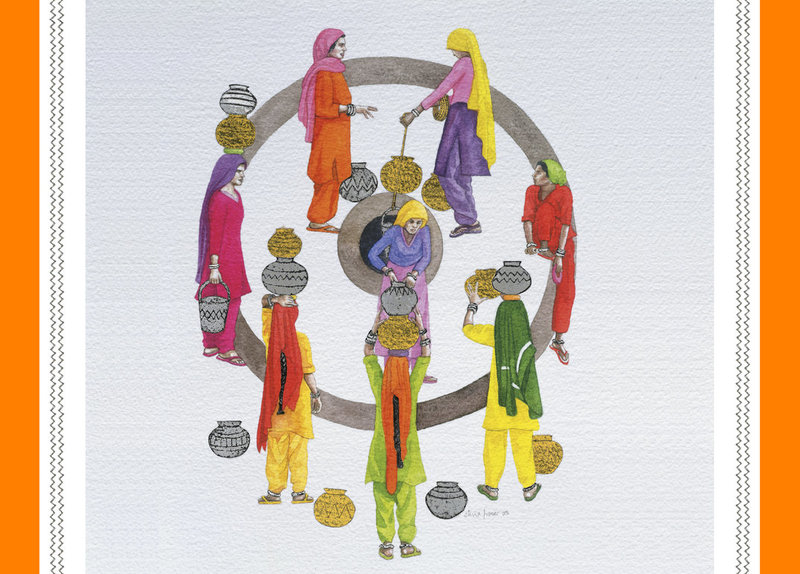
ಮರಗಳ ನಡುವೆ ಒಂದು ವಿಹಾರ (A Walk Among Trees) by Nimret Handa
The story follows the conversation between a king and his son, the prince, as they walk through the orchard. The king tells his son about all the different trees in India, all of which can be found in the royal orchard. Nimret Handa has written this beautifully with minimalistic illustrations, ensuring that the focus stays more on the writing and the information about each tree while still making it appeal to children.
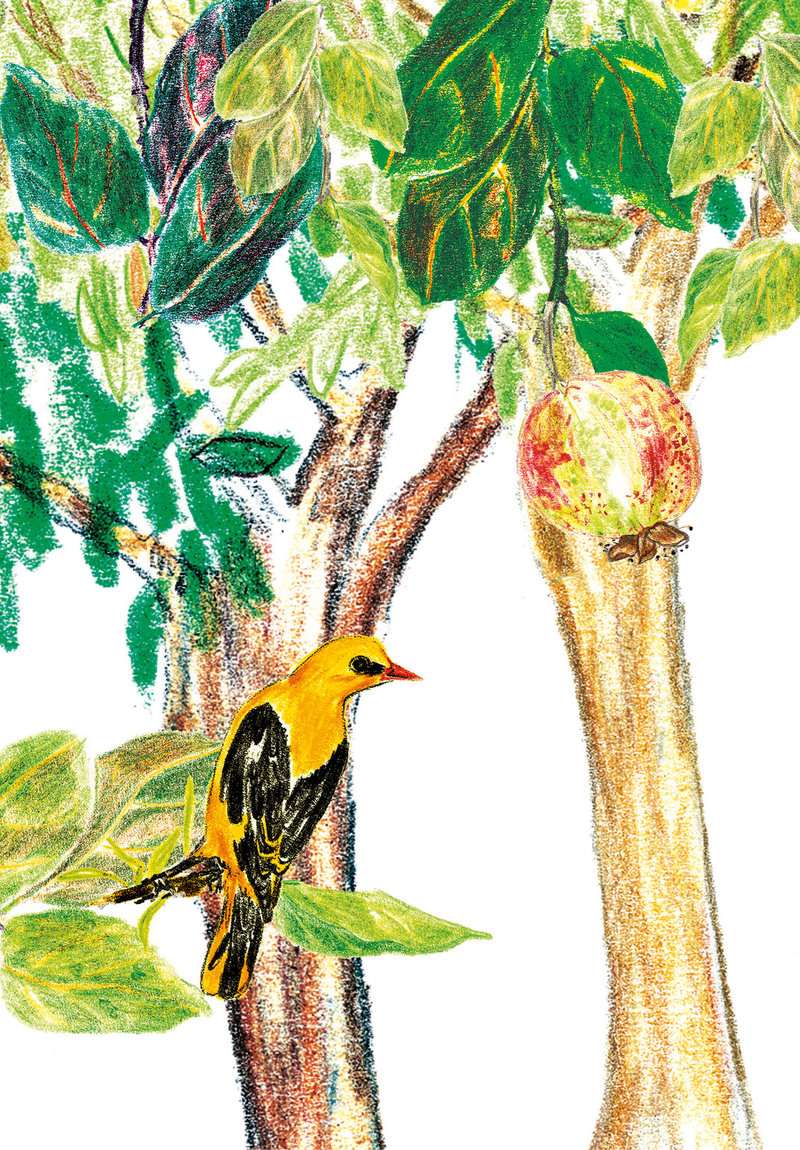
सबसे पहला घर (First House) by Nabanitha Deshmukh and Phidi Pulu
Set in Arunachal Pradesh, this folk tale tells the story of how the very first house was built. How the two friends: Kindru-Lalim and Kincha Lali-Dam got help from the forest to built the house. Along with facts about the tribe they belong to at the end, साबसे पेहला घर is brought to life with vibrant illustrations.
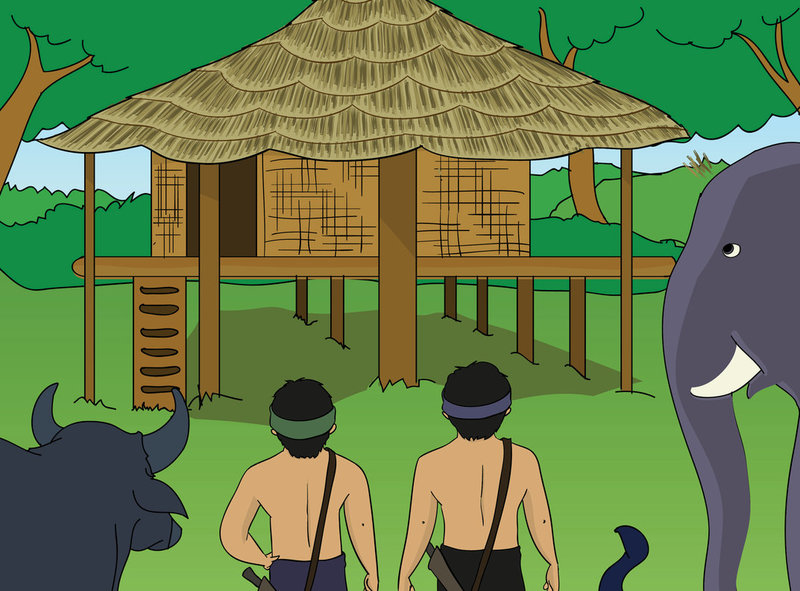
मुमताज़ ने काढ़े अपने सपने (Mumtaz Embroiders Her Dreams) by Jolly Rohatgi and Ram Soni
Mumtaz is a young girl who has come to Lucknow to further her knowledge of chikankari - the traditional embroidery style there. She meets a child called Munnu and Munnu teaches her how to dream - greatly influencing her embroidery. But Mumtaz also has a pair of cousins who are determined to ruin her work. This story, coupled with the unique illustration style, is definitely something children should read.

स्वातंत्र्याकडे आगेकूच (Marching to Freedom) by Subhadra Sen Gupta and Tapas Guha
Told from a child's point of view, this story is about the Dandi March that Mahatma Gandhi undertook. A young boy at the ashram finds out about the march and wants to join, only to meet Gandhi at the end of the book. The story itself is filled with beautiful, colourful illustrations that immediately catch the eye.
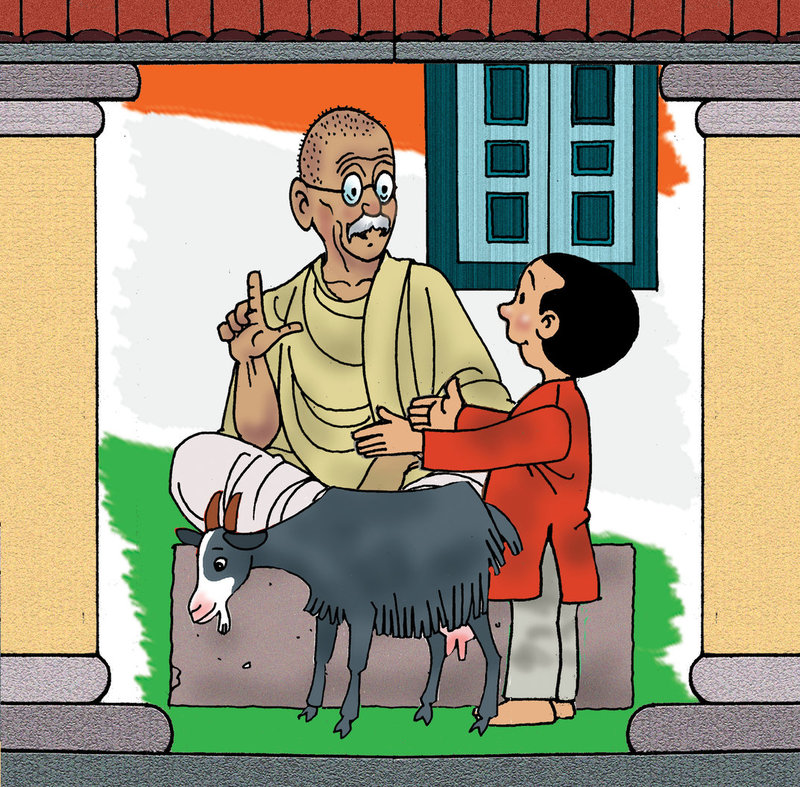
काका और मुन्नी (Kaka and Munni: A Folktale from Punjab) by Natasha Sharma
Kaka is a crow who wants to eat Munni, the sparrow's, eggs. Munni cleverly asks Kaka to do something first and so Kaka goes on a journey, needing to complete various tasks since nobody he meets wants him to eat Munni's eggs. A true children's and folk story, Kaka and Munni is a delightful read aloud story.
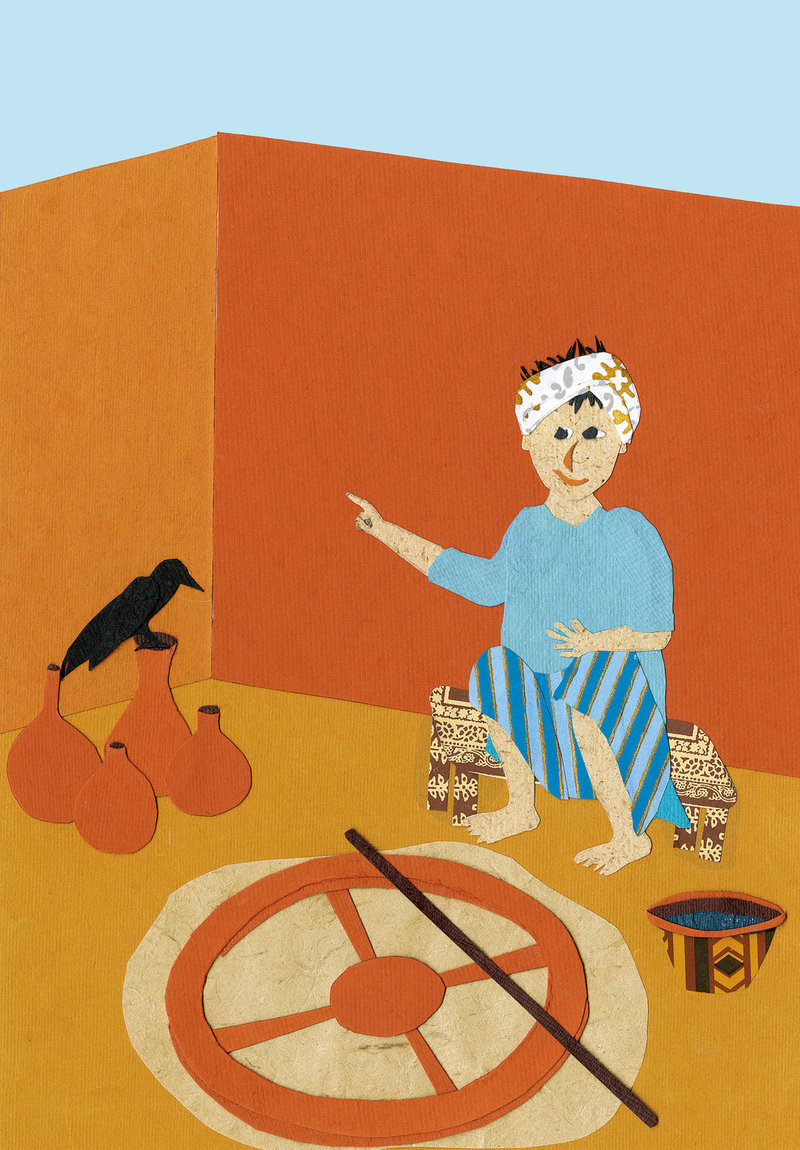
The illustrations almost entirely in different shades of blue, The Cloud Dragon tells the legend of how Meghalaya was named. It begins with Lord Indra making the cloud dragon and ends with a home in the clouds for the dragon, who brought down rainfall and make rain clouds for Meghalaya and the neighbouring states.

The Adventures of Philautus the Frog by Kartik Shanker and Maya Ramaswamy
Philautus the Frog wants to see the sea and so goes on an adventure through the Western Ghats in this story, meeting all the creatures beyond his tree.
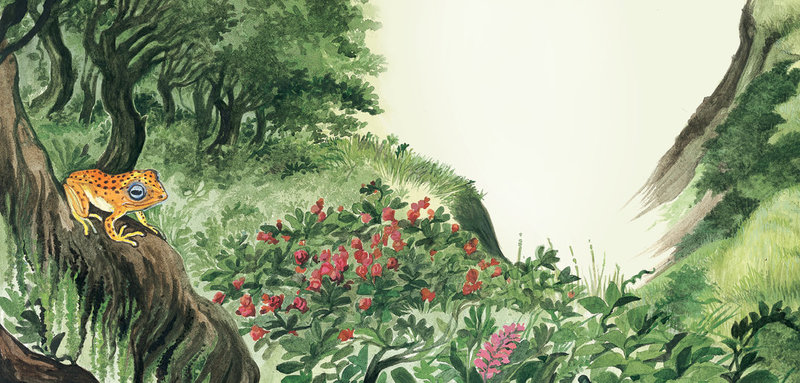
What’s Neema Eating Today by Bijal Vachharajani and Priya Kuriyan
What’s Neema Eating Today is a book for food lovers of all ages. Join Neema as she eats her way through the seasons, enjoying all the fresh fruit and vegetables this country has to offer our taste buds.

Be the first to comment.
Community News you can Use: Swetha Prakash's Ketto Fundraiser
Posted by Remya Padmadas on January 13, 2017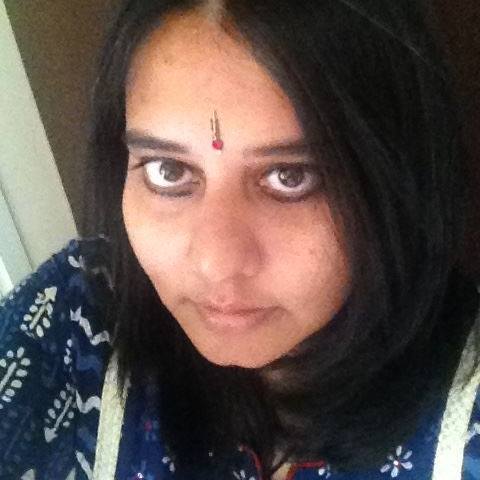
Swetha Prakash has an MA in Writing from the University of Warwick and is the recipient of the Charles Wallace India Trust Award by the British Council.She has won the The Times and Scottish Book Trust's New Writer Award and her book 'Padma Goes To Space' has been published by Tulika Books. She has edited India's first book on storytelling for schools published by Kathalaya, and recently wrote a nonfiction book called “Indian storytelling traditions.” She writes about how she is using StoryWeaver to raise funds for an NGO.
Everbefore the story goes...With humanity came myths and with myths came civilization. Myths are our collective dream. Myths are profoundly important for our individual and collective consciousness.
I am running a charity fundraising campaign for the Bangalore based poverty alleviation initiative, The/Nudge Foundation by creating original myths everyday. The campaign is called The Living Myths project. As a part of this campaign, I am posting one myth everyday on Storyweaver for 21 days. I am also urging friends and family to raise funds for The/Nudge Foundation by donating to my campaign on Ketto, which can be found here.
The/Nudge Foundation is a non-profit working on tackling poverty, which is the greatest human development challenge of our times. Their goal is to nudge 1 million people out of poverty.
How are they solving for it? Their flagship program, Gurukul, is a 100-day residential program for underprivileged youth where they are educated on livelihood skills, digital literacy, financial management, family management and personal development. The program works towards the holistic development of the students and makes sure that they work towards growing in their respective careers and always aspire for better opportunities. The Gurukul program assures job for every student and boasts off 123% placement rate.
Stories, myths and collective consciousness
What is storytelling really? It is an expression, which arises within the body from the same space that makes people paint, sing and dance. It is a message from your soul that you want to transmit to the world at large. Storytelling defines how we react to both external solid realities and to ephemeral ideas. The tellers are adepts at conjuring up the confusions and misapprehensions of life universe and everything. Stories attempt to pierce through the evanescent illusion of all life and creation. They bring to us the fullness of all life, its fulfilment, its elixir of immortality shrouded in the casket of death. Stories help us access the embodied existence of others, providing us with the fullness of our own being. They change and mould our collective consciences and teach us to extend our sympathies to other beings that share this existence with us. Stories are in their core lessons in sympathy, helping us extend our compassion and empathy to others.
Myths are narratives that answer the most profound and primordial questions of existence through fascinating stories populated by fantastic creatures. Myths typically attempt to explain how the universe is created and the primary powers that are behind all creation, manifestation and destruction. Myths about powerful beings responsible for creation can be found as far back as the Vedas.
Devdutt Pattanaik says in Indian mythology: tales, symbols, and rituals from the heart of the subcontinent, ‘Myth can be defined in two ways. First, it is a sacred idea that is inherited over generations. Second, it is absurd, irrational, and fantastic concepts about the world that appeal to unsophisticated minds. The two meanings are two sides of the same coin. Depending on one's point of view, a story, an image, or a custom can be sacred or stupid’
Most Indian myths can be found in the Puranas. Varied versions of the same myth exist. The same myth again may be open to varied interpretations depending on the audience and the purpose of narration. A myth may serve as simple delightful entertainment for the whole community or it may be understood as an entire philosophy encapsulates in symbolic code that opens up an entirely new field of meaning to a spiritual initiate who is able to read the sandhya bhasha or mystery mystical language.
You can read Swetha's modern myths here.
Are you using www.StoryWeaver.org.in in an interesting way? Write in and tell us at [email protected]
Be the first to comment.